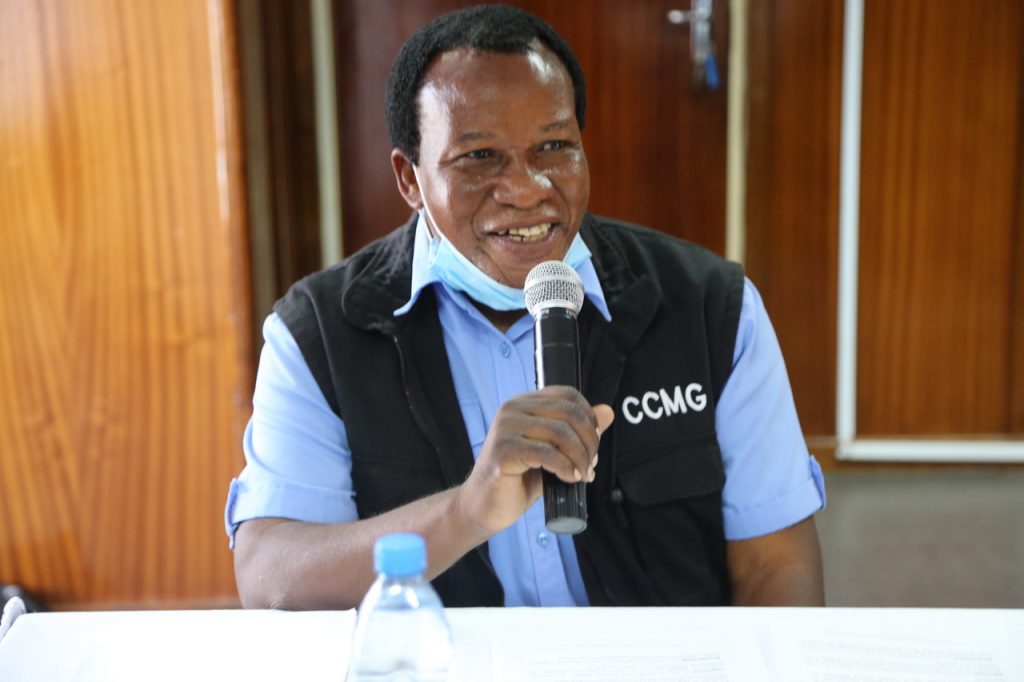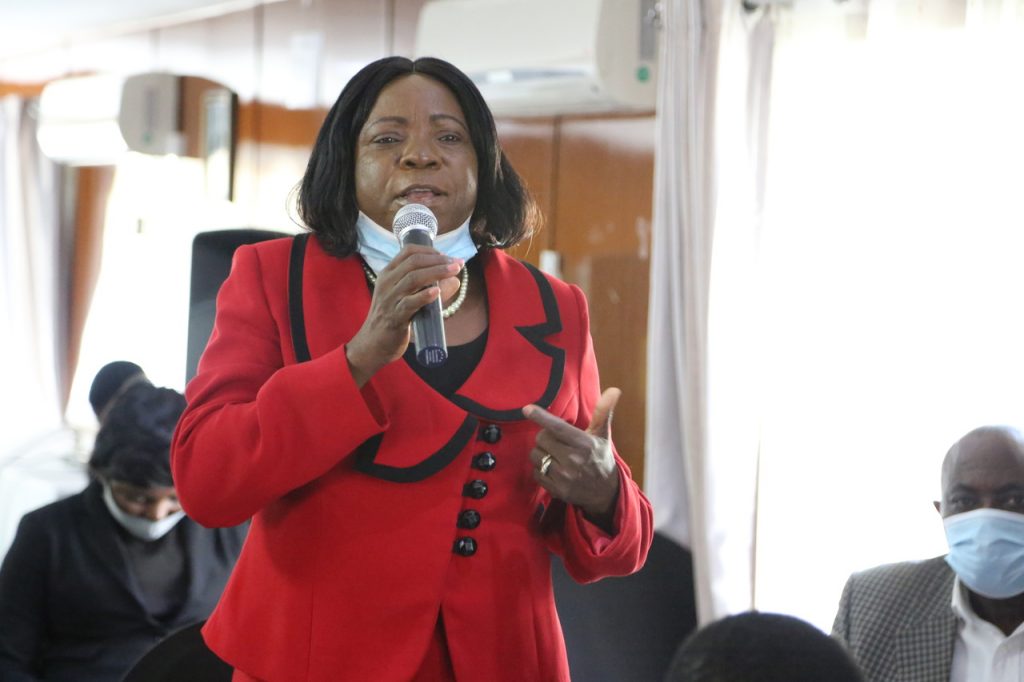Understanding the Credibility and Acceptability of the Voters Register
- Preamble
The Christian Churches Monitoring Group (CCMG) has completed its independent analysis of the voter registration numbers released by the Electoral Commission of Zambia (ECZ) in February 2021. CCMG commends the ECZ for releasing the voter registration figures showing the total number of voters registered, disaggregated by province, district and constituency, as well as gender.
CCMG, using the voting age population (VAP) estimates from the Zambia Statistics Agency (ZamStats) that were released in December last year[1], analysed the 2021 voter registration figures. The VAP is an estimate that shows how many eligible voters are estimated to reside in a given area. The use of VAP estimates to assess the quality of a voters register in terms of how well it reflects a country’s population is a standard practice of election observation groups worldwide. This is done to contribute to the credibility of the register because it determines how representative the register is of those who are eligible to vote.

2. Analysis
The table below provides the results of the analysis of the announced registration figures by province compared to the ZamStats VAP estimates. It is important to note that while registration rates may not be identical across the country, they should be relatively uniform. Similar registration rates suggest that all eligible voters had an equal opportunity to register while significant disparities suggest under or over registration of particular communities.
| Province | ECZ Registered Voters | ZamStats VAP Estimate | % Registered |
| Luapula | 562,230 | 601,058 | 93.5% |
| Eastern | 896,213 | 973,790 | 92.0% |
| Western | 447,143 | 507,184 | 88.2% |
| North-Western | 384,452 | 447,661 | 85.9% |
| Northern | 600,859 | 706,495 | 85.0% |
| Total Zambia | 7,002,393 | 8,414,839 | 83.2% |
| Copperbelt | 1,023,223 | 1,257,460 | 81.4% |
| Province | ECZ Registered Voters | ZamStats VAP Estimate | % Registered |
| Lusaka | 1,241,992 | 1,545,892 | 80.3% |
| Muchinga | 401,542 | 507,366 | 79.1% |
| Southern | 778,099 | 1,005,816 | 77.4% |
| Central | 666,640 | 862,117 | 77.3% |
This analysis demonstrates that there are three provinces – Muchinga, Southern and Central provinces – where under 80 percent of the estimated voting age population is registered and that the two provinces with the largest populations provinces – Copperbelt and Lusaka provinces – are registered at rates that are below the national average (83.2 percent). The analysis also shows that there is 16.2 percent registration rate gap between the province with the highest registration rate (Luapula) and the province with the lowest registration rate (Central), although this is a smaller gap compared to 2016 based on a similar analysis of the 2016 voters register.

In addition to the VAP analysis of the voters register presented above, CCMG observers also monitored both the mobile national registration card (NRC) issuance exercise and the voter registration process. Both observation efforts point to several shortcomings and/or possible concerns with both of those efforts. The primary among several that CCMG has raised are:
- Multiple unannounced mobile NRC issuance exercises that were confirmed by CCMG observers and media to have taken place in Eastern, Northern, Luapula, North-Western and Muchinga provinces. Despite CCMG inquiries to the Ministry of Home Affairs on this matter, no explanation or public accounting of these activities was provided.
- A ministerial statement in Parliament detailing the Ministry of Home Affairs’ targets for NRCs to be issued and those actually issued that showed issuance rates against the targets varied significantly by province, with the lowest issuance rates in Western (52%), Lusaka (79%), Southern (90%) and Copperbelt (93%) and the highest issuance rates in Luapula (181%), Northern (156%), Central (145%), North-Western (135%) and Muchinga (118%); despite CCMG inquiries to the Ministry of Home Affairs, no explanation up to now has been provided for the varying NRC issuance rates against the targets.
- Widely varying ECZ staffing rates by province at registration centres as documented by CCMG observers[2], showing provinces with the most registration centres staffed with only one ECZ official were North-Western (75% of centres), Copperbelt (70% of centres), Western (56% of centres) and Southern (53% of centres). Provinces with the least registration centres staffed by only one ECZ official were Eastern (28% of centres), Northern (33% of centres), Muchinga (35% of centres) and Luapula (37%) of centres; despite CCMG inquiries, the ECZ did not share where or how many registration officials were deployed by province either prior to Phase 1 or when additional staff were added prior to Phase 3.
- Long voter registration lines leading to a slow registration process, particularly in urban areas and especially at the beginning of voter registration, that likely had a deterrent or frustrating effect on some citizens who had intended to register.
- The ECZ’s strategy for the December 2020 extension of the voter registration period was not based on an analysis of where there was under-registration and targeting those areas for an extension period.

3. Conclusion
In order to address the concerns of key stakeholders and based on these shortcomings in the mobile NRC issuance and the voter registration processes, CCMG would like to strongly urge the ECZ to undertake additional targeted voter registration exercises where there is demonstrated relative low registration rates per the VAP analysis, especially in the three provinces with the lowest registration rates – Central, Southern and Muchinga. However, any targeted voter registration exercise should be based on an analysis of registration rates at lower geographic levels as well. Using the December 2020 ZamStats VAP estimates, CCMG has (see Appendix 1 below) identified districts with registration rates below 75 percent. While it would require additional effort, CCMG believes it would be possible to undertake quick and targeted voter registration in under-registered districts and urges the ECZ to do so to build confidence in the voter registration process and to provide those in under-registered areas every opportunity to participate in the electoral process.
A voting age population estimate analysis is only one type of analysis that can be conducted on a voters register to determine the quality of the register. CCMG would again like to call upon the ECZ to release the complete provisional voters register, as well as the certified voters register, to allow stakeholders to review the full registers and to conduct computer-based audits of the register. By releasing the voters registers for stakeholders to inspect in this way, ECZ will be demonstrating its commitment to the transparency of the electoral process, and will go a long way in building confidence and acceptability of the outcome of the elections.
Appendix 1: Districts with Low Registration Rates
There are 20 districts with registration rates under 75%. Low registration rates could be due to those areas not being provided sufficient opportunity to register or some registrants from those areas not being included on the voters register, but this could also be due to individuals choosing to register in other areas or due to demographic changes.
| Appendix 1: Districts with Low Registration in the 2021 Voters Register |
| Province | District | ZamStats VAP Estimate 2020 | Registered Voters 2021 | Registration Rate |
| Southern | Pemba | 45,837 | 34,324 | 74.9% |
| Copperbelt | Mpongwe | 59,536 | 44,295 | 74.4% |
| Northern | Lunte | 36,954 | 27,419 | 74.2% |
| Muchinga | Nakonde | 85,344 | 63,237 | 74.1% |
| Central | Mkushi | 73,853 | 54,635 | 74.0% |
| Western | Sikongo | 25,528 | 18,836 | 73.8% |
| Northern | Senga Hill | 59,029 | 43,240 | 73.3% |
| Muchinga | Lavushimanda | 29,000 | 20,871 | 72.0% |
| Lusaka | Rufunsa | 35,220 | 25,324 | 71.9% |
| Copperbelt | Lufwanyama | 50,050 | 35,905 | 71.7% |
| Muchinga | Chama | 74,070 | 53,075 | 71.7% |
| Central | Mumbwa | 108,166 | 75,425 | 69.7% |
| Central | Serenje | 73,571 | 50,010 | 68.0% |
| Northern | Lupososhi | 44,311 | 29,444 | 66.4% |
| Southern | Namwala | 70,189 | 44,515 | 63.4% |
| Southern | Kalomo | 128,751 | 81,653 | 63.4% |
| Central | Chisamba | 64,898 | 40,627 | 62.6% |
| Central | Kapiri Mposhi | 145,137 | 89,925 | 62.0% |
| Muchinga | Kanchibiya | 58,568 | 34,811 | 59.4% |
| Eastern | Lusangazi | 37,309 | 19,546 | 52.4% |
[1] CCMG sent a letter to ZamStats seeking clarification on how the VAP estimates were developed but has not yet received a response. If ZamStats provides a response at a later date that alters CCMG’s analysis, CCMG will issue a statement to share any changes.
[2] See CCMG’s findings and recommendations in its 2020 Voter Registration Report Phases 1-4 at ccmgzambia.org/download/ccmg-2020-voter-registration-report-phases-1-4/




